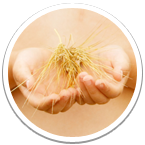Legislation and guidelines relating to legionellae
Finnish legislation is applied for the monitoring and prevention of legionellosis infections and to guide the Legionella bacteria control in housing, workplaces and recreational areas. The Legionella guidelines prepared through international cooperation complement this legislation.
Under the Decree of the Ministry of Social Affairs and Health on the Quality and Monitoring of Household Water and the Risk Management of Water Systems of Buildings (1352/2015), which entered into effect on 12 January 2023, the action threshold for legionella concentrations in household water and hot domestic water is 1000 cfu/l. Measures must be taken to prevent Legionella if the Legionella concentration in the water sample taken from the water system of the building is 1000 cfu/l or higher. The action threshold applies to the total number of all bacteria belonging to the Legionella genus, detected using the standard method SFS-EN ISO 11731:2017.
In future, risk assessments must be carried out in so-called priority premises. Such premises include sites such as hospitals, swimming pools and hotels. In the risk assessment, information on the building’s water system is used to assess whether the risk for the presence of Legionella has increased.
Further reading:
- Decree of the Ministry of Social Affairs and Health on the Quality and Monitoring of Household Water and the Risk Management of Water Systems of Buildings (1352/2015) (Finlex, in Finnish)
- Valvira’s guideline: Risk assessment of Legionella bacteria and lead in water systems of buildings and risk management (pdf 371 kB, in Finnish)
Below, you will find the details of statutes and instructions applying to different sites.
Communicable Diseases Act
Under the Communicable Diseases Act (1227/2016), legionellosis is one of the communicable diseases that is to be monitored. Doctors and laboratories must report legionellosis and clinical Legionella findings to the National Infectious Diseases Register.
The Finnish Institute for Health and Welfare participates in national and international cooperation related to the prevention of infectious diseases, for example by providing expert assistance to municipalities. Since 2014, efforts have been made to systematically investigate the sources of legionellosis infection in Finland and, through intensified control measures, to prevent further cases resulting from the sources of infection found.
Instructions for housing
Instructions for workplaces
Instructions for ships
Instructions for recreational facilities
International cooperation work underpinning the guidelines
International guidelines for legionellae
International guidelines for legionellae, including those relating to Finland, have been produced, for example, by the European Union, the European Centre for Disease Prevention and Control (ECDC), World Health Organization (WHO) and ESCMID Study Group for Legionella Infections (ESGLI).
Action thresholds and reference concentrations for cultivated concentrations of legionellae
The action threshold is the value of the concentration obtained through cultivation of legionellae which, if exceeded, obligates to take measures to prevent Legionella and reduce the risk of infection.
The following is a list of legionellae reference concentrations and their interpretation, for legionellae that have been determined through cultivation, according to standard SFS EN ISO 11731:2017.
Microbiological water analysis
Analysing water samples and determining sources of infection
Laboratory studies of Legionella (in Finnish)
Clinical samples and typing of legionella strains (on the Infectious Diseases and Vaccinations website)
Legionella (in Finnish)
Information on transmission, detection, symptoms and treatment (on the Infectious Diseases and Vaccinations website)
Drinking Water Directive (EUR-Lex)
Directive (EU) 2020/2184 of the European Parliament and the Council on the quality of water intended for human consumption
ESGLI: Legionella infections
Website of the ESCMID Study Group for Legionella Infections (ESGLI)




